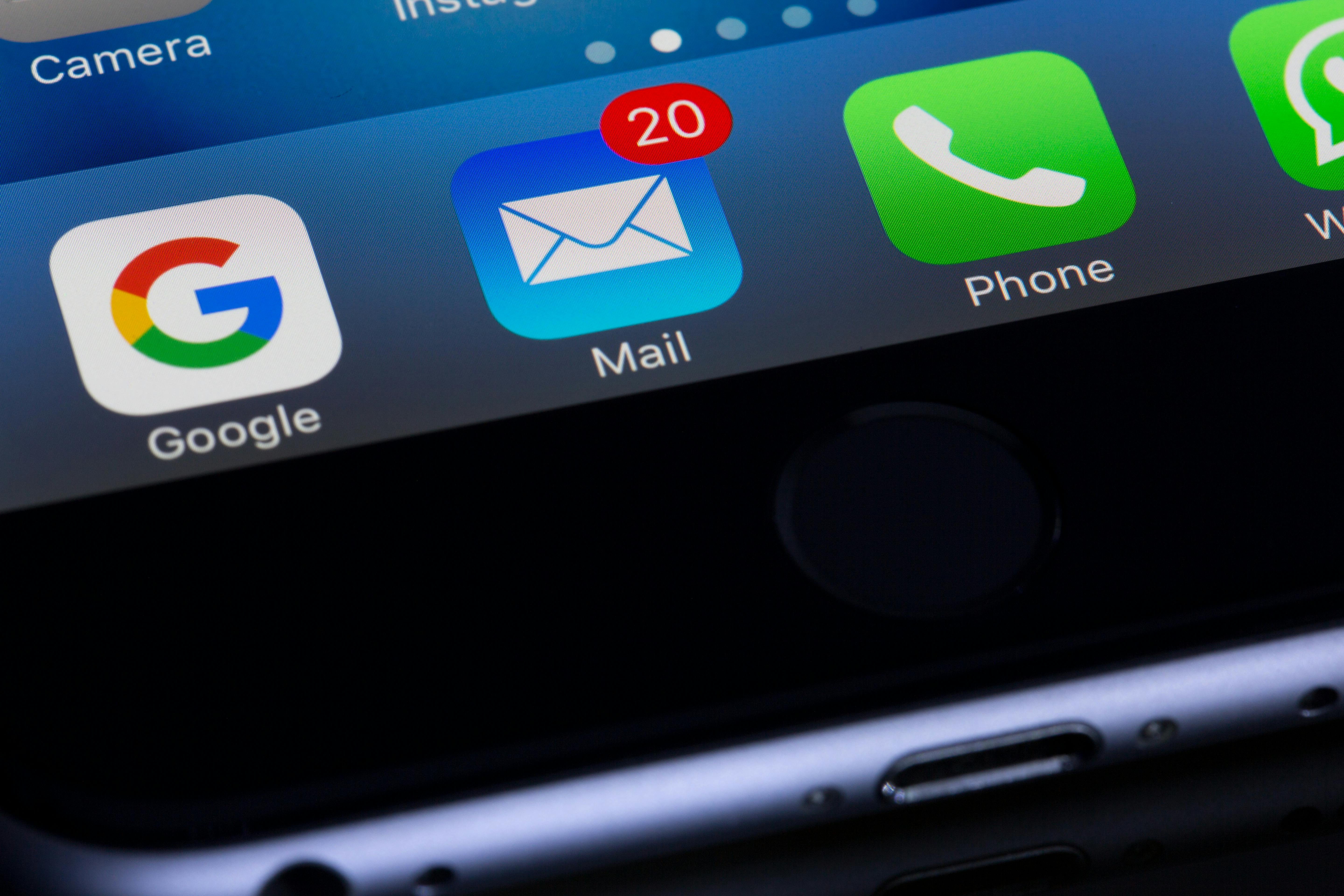Cold Email
Master Cold Email Sequence for High Conversions and Leads
Crafting effective cold email sequences is key to connecting with prospects. Master personalisation, timing, and strategies to build trust and boost results.
Jun 12, 2025

Reaching out to someone who’s never heard of you might sound intimidating, but that’s where a well-crafted cold email sequence comes in. It’s not just about sending one email and hoping for the best; it’s about creating a strategic series of messages that spark interest, build trust, and eventually lead to meaningful conversations. Done right, it can turn complete strangers into valuable connections.
Cold email sequence isn’t just a handy tool, it’s essential. Whether you’re in sales, marketing, or business development, mastering this approach can open doors to new opportunities and help you connect with the right people. Curious about how to make your emails impossible to ignore? Let’s jump into the art of crafting sequences that actually get results.
What Is a Cold Email Sequence?

A cold email sequence is an organised series of follow-up emails crafted to engage potential prospects with whom you've had no prior interaction. Rather than relying on a single email, this strategy uses multiple messages sent over time to nurture relationships, raise interest, and eventually convert prospects into active leads.
Why You Need a Cold Email Sequence
Cold email sequences are indispensable for building valuable relationships and growing your business. Rather than sending a single email, a structured sequence keeps prospects engaged, encourages meaningful interactions, and steadily nudges them through the sales funnel.
Building Stronger Connections With Prospects
A well-designed cold email sequence builds rapport with prospects over time. Each email should focus on resolving their pain points or offering something of value. Start the first email with a personalised introduction highlighting a unique benefit or insight tied to their industry or role. For example, if you're targeting marketers, offer actionable tips on increasing campaign ROI.
Follow up emails should aim to deepen the relationship rather than pushing hard sales. Share resources like case studies, free tools, or whitepapers that align with their challenges. Timing matters here, space your emails several days apart to allow time for genuine interest to develop. Maintaining this rhythm builds trust and keeps you on their radar longer.
Boosting Conversions and Sales
Cold email sequences guarantee prospects progress toward becoming paying customers. Success depends on how effectively you shift from offering value to presenting a tailored solution. For example, after establishing interest, include specific product benefits, limited-time discounts, or a link to book a demo.
Always include a clear call-to-action (CTA). Whether you want recipients to book a call, respond with questions, or download a resource, keep CTAs direct and easy. Growleady can optimise your email campaigns by crafting messages that are both attention-grabbing and results-driven.
Test different approaches across your sequence. Try varying subject lines, preview text, and even email lengths to identify what yields higher open and response rates. Use feedback from these tests to refine your outreach strategy.
Efficiently Reaching Target Audiences
Cold email sequences let you connect with tailored audiences without wasting time. Start by segmenting your email list based on variables like industry, job title, or company size. This approach ensures your messages are relevant, increasing the likelihood of engagement.
When reaching niche audiences like venture funds or C-suite executives, keeping your emails concise and professional works best. For broader groups, more educational content such as industry insights or upcoming trend reports can capture attention. Personalisation is key regardless of the audience, mentioning specific achievements or referencing their company shows genuine interest.
Automation tools streamline the process, letting you send timely follow-ups without manual effort. Avoid being labelled as spam by authenticating your domain, limiting promotional language, and formatting emails for readability. Strategic tools like targeted LinkedIn outreach can also complement your cold email efforts, especially for direct interactions with decision-makers.
Key Elements of an Effective Cold Email Sequence
Understanding the key elements of a cold email sequence can make your efforts more impactful. Incorporating these strategies ensures your emails resonate with recipients and improve engagement, turning prospects into valuable connections.
Personalisation and Relevance
Crafting emails tailored to your recipients' needs is essential. Personalisation demonstrates that you've done your assignments, making your message appear thoughtful instead of generic. Include their name, company, or a relevant detail about their business in your email. For example, if you're reaching out to a SaaS company struggling with user retention, address this specific challenge and offer an actionable solution.
Relevance strengthens personalisation. Sharing information linked directly to their interests or industry pain points makes your email valuable. For instance, offering insights on improving lead generation to a marketing agency aligns with their core objectives, showcasing that you understand their priorities.
Clear Value Proposition
A clear value proposition answers a prospect's key question: "What's in it for me?" Clearly outline how your product or service solves their problems or improves their business. Avoid vague benefits and focus on specifics. For example, highlight cost savings, efficiency improvements, or data-driven outcomes your offering provides.
Keep this part concise and impactful. Instead of listing features, stress the benefits. For instance, rather than "Our tool tracks email opens and clicks," say "Our tool enables you to identify high-potential leads by tracking email engagement." This approach directly connects value to your recipient's business goals.
Strong Call-To-Action (CTA)
A clear and actionable CTA directs the recipient’s next step. Ambiguity dilutes results, so state the desired action plainly. Use verbs like "Schedule", "Reply", or "Download" to create urgency. For example, say, "Schedule a 15-minute call to explore how we can enhance your email marketing results."
Guarantee your CTA matches the email’s context. In an introduction email, invite them to learn more, such as "Reply, and I'll share a quick case study similar to your industry." In follow-ups, incorporate a CTA like "Let’s book a time to discuss solutions tailored for your team." By aligning the ask with the sequence stage, you'll reduce resistance and boost conversion rates.
Timing and Frequency
Proper timing ensures your emails don’t overwhelm or lose relevance. Space your emails thoughtfully, typically, every 2-3 days in a sequence works well. For example, the first email can be an introduction, the second could provide value or resources, and the third might include social proof.
Weekday mornings often perform better for B2B contexts, as work schedules are more aligned during these times. Avoid weekends unless your recipients operate in industries with weekend business hours, like hospitality.
If no response occurs after four to six emails, pause. Overcommunication risks alienating prospects.
Steps to Create a High-Converting Cold Email Sequence
Building a cold email sequence that drives meaningful engagement isn't overly complex, but it requires careful planning and execution. Here's how you can create high-converting email sequences that leave an impact.
Define Your Objective and Target Audience
Start by identifying the objective of your cold email sequence. Whether you're looking to generate leads, book appointments, or promote a product, keep your goal crystal-clear to shape your strategy effectively.
Next, focus on your target audience. Be specific about who you're reaching. Use segmentation techniques to group recipients based on relevant characteristics like job roles, industries, or past behaviours. For example, if you're targeting CEOs, tailor your message to address big-picture challenges like profitability or strategic growth.
Craft Engaging Subject Lines
Subject lines determine whether emails get opened or ignored. Make them direct but intriguing. Keep them under 60 characters; attention spans are often short. Highlight something valuable, such as, “Boost ROI by 30% – Let’s Discuss.”
Personalisation also performs remarkably well. Mention the recipient's name or company for an immediate connection. Avoid clickbait or excessive sales language, or risk landing in the spam folder. Examples of effective lines include, “Quick question about [Recipient’s Company]” or “[Recipient,] here's one way to streamline [Pain Point].”
Plan the Email Flow and Content
Structure your email flow to build trust while gently nudging prospects towards action. Typically, a good sequence ranges from 3–5 emails, spaced a few days apart.
Email 1: Introduce yourself and your value proposition. For instance, highlight how your offering solves a common issue in the recipient’s industry.
Email 2: Follow up by sharing a helpful resource, such as a guide or case study, to establish expertise.
Email 3: Address common objections subtly, demonstrating how your solution overcomes hesitation.
Email 4: Include a bold but friendly call-to-action, like scheduling a meeting or sharing feedback.
Keep your messages concise, relevant, and actionable. Avoid overwhelming your recipients with excessive information, sticking instead to one value-driven point per email.
Automate and Monitor Performance
Automation streamlines execution and ensures your sequence runs seamlessly. Tools designed for automated cold email outreach help you manage follow-ups, allowing consistent communication without manual effort. They also track indispensable metrics like open rates, click-through rates, and responses, helping fine-tune your strategy for maximum impact.
Monitor performance closely. Conduct A/B tests on subject lines or calls-to-action to find what resonates with your audience. If one version garners a higher response rate, pivot accordingly. Adjust timing if open rates dip—sending emails at best possible times, such as midweek mornings, improves visibility.
By combining these steps with meticulous planning, personalisation, and testing, you'll likely experience higher engagement and conversion rates for your cold email campaigns.
Types of Cold Email Sequences
Cold email sequences play a essential role in your outreach strategy by creating consistent touchpoints that guide prospects through their decision-making process. Each sequence type serves a specific purpose, helping you connect with your audience effectively.
Nurturing Sequence
A nurturing sequence builds relationships with leads who may not be ready to make immediate decisions. This sequence focuses on educating prospects about your offerings while addressing potential pain points or challenges.
When to use: Use nurturing sequences when engaging new leads or early-stage prospects from B2B lead generation initiatives.
How to structure: Share valuable content, like industry insights, case studies, or blog posts, over 3–5 well-timed emails. Provide solutions tailored to specific prospect needs for better resonance.
Best practices: Personalise each email, emphasise relevance to their business, and guarantee a clear yet non-intrusive call to action, such as inviting them to book a free consultation or download an eBook.
For example, if you're targeting small businesses, highlight challenges they face and how your solution simplifies their work.
Follow-Up Sequence
The follow-up sequence reignites conversations after initial contact or inquiry, ensuring your brand remains top-of-mind.
When to use: Use this when a prospect has shown interest but stopped engaging or hasn't responded to your first email.
How to structure: Create 2–4 follow-up emails spaced out strategically. Reference your first email, reiterate your value proposition, and gently nudge prospects towards action.
Best practices: Use subject lines that draw attention, like "Still interested in improving [specific area]?" Avoid pushy language; instead, remind them of how you can support their goals.
Follow-ups demonstrate persistence without being intrusive, boosting response rates. Growleady simplifies this process by crafting attention-grabbing emails that turn dormant prospects into active opportunities.
Re-Engagement Sequence
Re-engagement sequences target cold prospects or lapsed customers, aiming to revive their interest in your offerings.
When to use: Use this sequence for contacts who haven't interacted with your emails, made purchases, or visited your website for months.
How to structure: Initiate with an email acknowledging the inactivity. Follow with an exclusive offer or updated information about relevant services. Include a final email highlighting their last chance to act on a special promotion.
Best practices: Use personalised content, create urgency without being overbearing, and offer clear next steps like revisiting your website or scheduling a call.
Re-engagement emails work well for audiences who might have forgotten about your brand but can recall its benefits with timely, engaging communication.
Conversion-Focused Sequence
A conversion-focused sequence is designed to drive action, such as scheduling a meeting, trial signup, or product purchase.
When to use: Use this sequence for prospects nearing the decision stage of the buyer journey.
How to structure: Start with an email addressing their potential objections. Add value through exclusive offers, testimonials, or detailed product explanations. Conclude with an urgent call to action, like "Book your demo today before spots fill up."
Best practices: Focus your messaging on how your solution solves their challenges. Include clear benefits, as well as links to success stories or reviews for trust-building purposes.
For instance, C-Suite executives often appreciate concise, benefit-oriented pitches that highlight measurable results, making them more inclined to act on your offers.
Each sequence type bolsters engagement across different stages, keeping your outreach efforts aligned with the needs of your target audience. Incorporating structured cold email sequences allows you to build relationships, rekindle interest, and drive tangible results.
Tips for Cold Email Sequence Success
Mastering cold email sequences can significantly boost your lead generation, sales, and marketing efforts. To guarantee your outreach campaigns connect with prospects, consider these expert-backed strategies.
Keep Emails Short and Actionable
Craft concise messages that get straight to the point. Prospects often skim emails, so focus on delivering clarity. Each email should highlight one key idea, such as a solution to a problem or a unique value you provide. Instead of overwhelming recipients with information, guide their next step with a clear and simple call-to-action, like booking a call or replying with a question.
Use formatting techniques, like bullet points, to break down information and maintain readability. For example, if you’re targeting busy sales executives, a bullet list outlining how your solution increases revenue may drive engagement. Avoid lengthy introductions; instead, personalise your opening sentence by mentioning their company or specific challenges they face.
Use Supporting Evidence or Social Proof
Gain credibility by including testimonials, success metrics, or case studies in your email. Sharing measurable results, such as a 40% increase in lead conversion for a previous client, can prove your effectiveness and build trust. Social proof, like mentioning well-known brands you've worked with, demonstrates authority and adds reassurance.
When targeting industries like SaaS or IT services, highlight case study outcomes or include links to relevant success stories. If a case study isn’t feasible, reference recognition in your field or partnerships. For example, “Our strategy helped a leading SaaS business reduce churn by 25% within six months.” Specific, data-backed claims strengthen your value proposition.
Test and Refine Your Approach
Experimentation is an essential part of cold email success. A/B test subject lines, email copy, and call-to-action phrasing to pinpoint what performs better. For instance, testing a headline like “Open up 300% ROI with Our B2B Solutions” against a more personalised “Boost Sales at [Prospect’s Company Name]” can reveal which tone resonates more.
Monitor open rates, reply rates, and conversion metrics to identify weak links in your sequence. Refine timing based on audience behaviour, sending emails between Tuesday and Thursday can often yield higher engagements due to reduced workload distractions.
Conclusion
Mastering a cold email sequence is about more than just sending messages, it's about creating meaningful connections that drive results. By focusing on personalisation, relevance, and a clear value proposition, you can engage your audience effectively and guide them through the decision-making process.
Whether you're nurturing leads, re-engaging prospects, or driving conversions, a structured and thoughtful approach ensures your efforts resonate. Combine strategy with tools like automation and A/B testing to optimise your sequence and achieve consistent success.
Stay persistent and adaptable, and you'll open up the potential of cold email sequences to grow your business and build lasting relationships.
Frequently Asked Questions
How many emails should be in a cold email sequence?
A well-structured cold email sequence typically consists of three to five emails. This allows you to introduce yourself, provide value, address objections, and include clear calls to action without overwhelming the recipient.
What are some common types of cold email sequences?
Cold email sequences include nurturing sequences to build relationships, follow-ups to reinitiate conversations, re-engagement sequences for cold leads, and conversion-focused sequences that encourage recipients to take decisive action.
How can I avoid being marked as spam when sending cold emails?
To prevent spam classification, avoid misleading subject lines, personalise your emails, include an easy opt-out option, and use a verified email domain. Timing your emails strategically and limiting their frequency also helps.
Is it legal to send cold emails?
Yes, cold emailing is legal in many countries if you follow regulations like GDPR in Europe or CAN-SPAM in the US. Ensure your emails offer value, avoid deception, and include an opt-out option and accurate sender information.
Should I use automation for cold email sequences?
Yes, automation tools can streamline follow-ups, track performance, and personalise emails at scale. They help you manage sequences efficiently while ensuring consistency and improving engagement rates.

